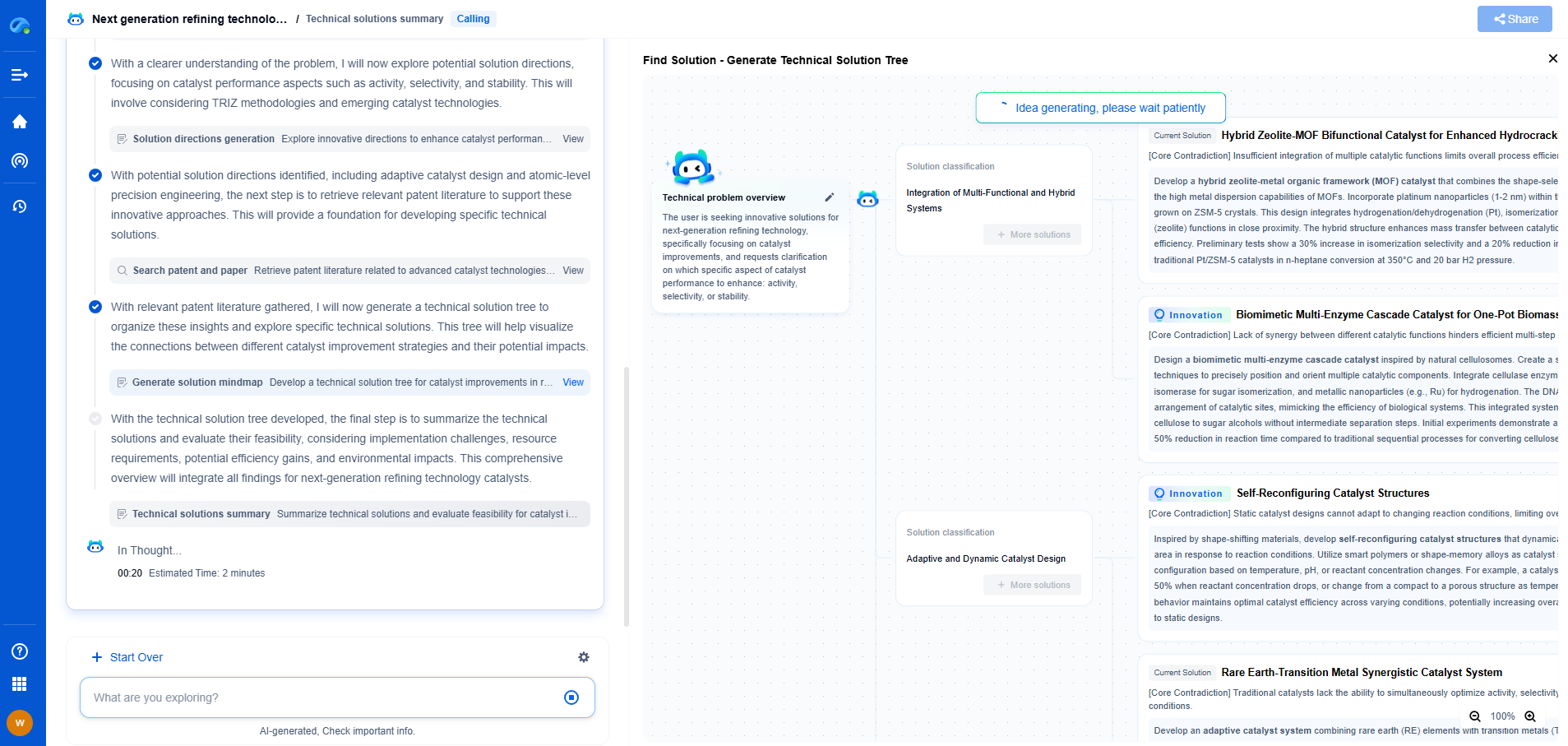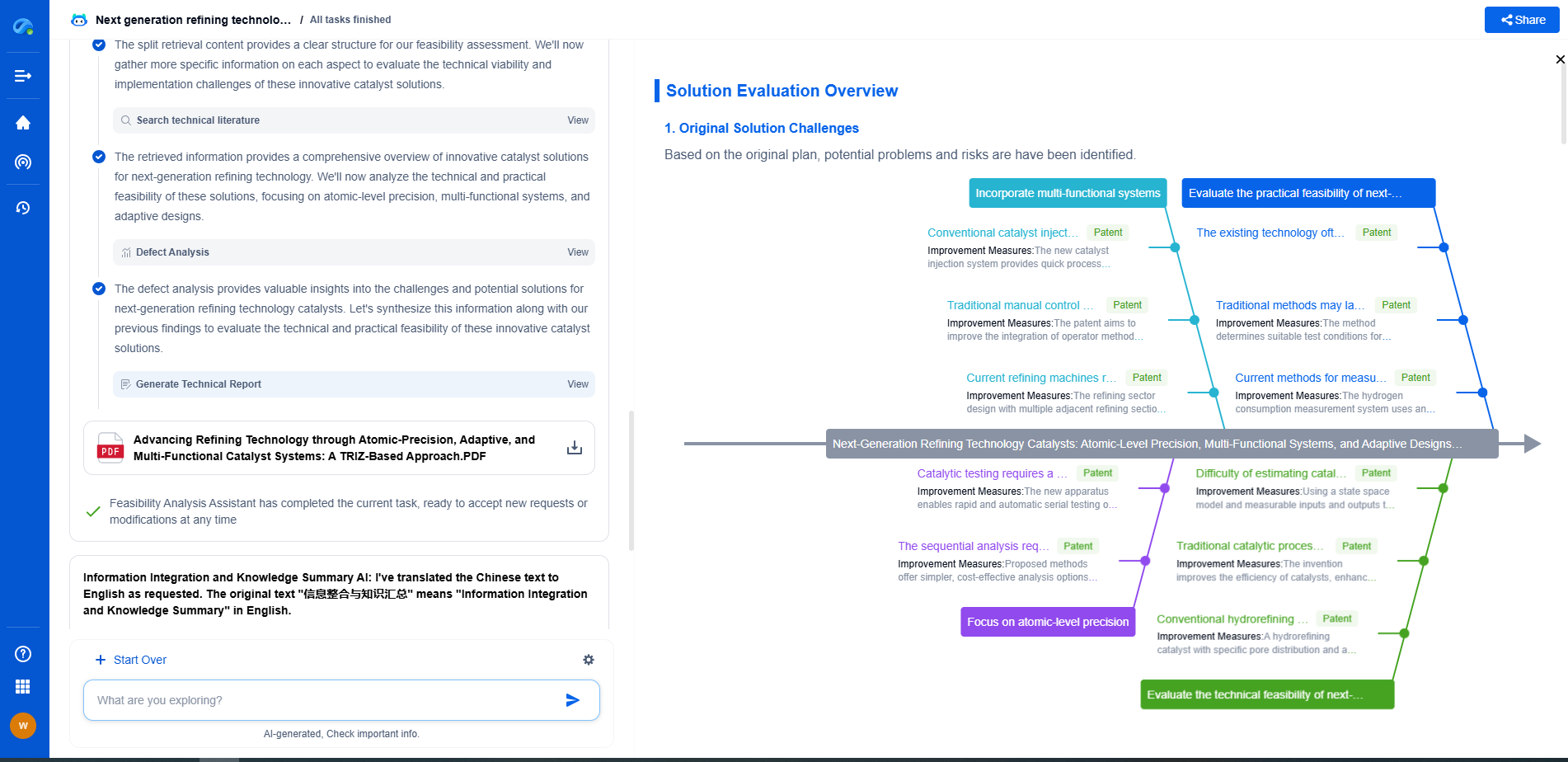How to Test Insulation Resistance: Instruments and Methods
JUL 9, 2025 |
Insulation resistance testing is a critical process to ensure the safe and efficient operation of electrical systems. It helps identify any leakages or weaknesses in the insulation, which can lead to equipment failures or even hazardous situations. The testing process involves measuring the resistance of the insulating material in an electrical device to ensure it is functioning correctly. This blog will guide you through the instruments and methods used for testing insulation resistance.
Instruments Used for Insulation Resistance Testing
1. Megohmmeter
The megohmmeter, often referred to as an insulation tester, is the primary instrument used for measuring insulation resistance. Unlike a standard multimeter, a megohmmeter can apply higher DC voltages, which are necessary for testing insulation. These devices are available in both analog and digital formats, offering a wide range of resistance measurements, typically from a few megohms to teraohms.
2. Insulation Resistance Tester
An insulation resistance tester is a specialized instrument designed specifically for measuring the resistance of insulating materials. It can handle a variety of test voltages and is suitable for more detailed testing. These testers are commonly used in industrial settings where precise measurements are necessary.
3. Multimeter with Insulation Function
Some advanced multimeters come equipped with an insulation testing function. While they might not replace dedicated insulation testers in terms of range and accuracy, they are handy for preliminary assessments or troubleshooting in the field.
Methods of Insulation Resistance Testing
1. Spot Reading Test
This is the most straightforward method of insulation resistance testing. The spot reading test involves applying a test voltage to the insulation and taking a direct resistance reading. The resulting value is compared against predetermined standards to determine if the insulation is in good condition. This test is quick and provides an immediate snapshot of the insulation's integrity.
2. Time-Resistance Method
The time-resistance method involves taking several resistance measurements over a fixed period. The readings help identify any changes in the insulation's resistance, which might indicate moisture ingress or other deterioration factors. This method is particularly useful for monitoring the condition of insulation over time and can provide early warning signs of potential issues.
3. Polarization Index Test
The polarization index test is a more detailed assessment method. It involves taking resistance measurements at two different intervals, typically after one minute and ten minutes. The ratio of these readings, known as the polarization index, helps assess the condition of insulation. A low ratio may indicate moisture or contamination, while a high ratio suggests good insulation quality.
4. Step Voltage Test
The step voltage test applies increasing voltages to the insulation in steps and measures the resistance at each level. This method helps identify weaknesses or potential breakdown points in the insulation. It is particularly effective in detecting issues that might not be apparent at lower voltages.
Safety Precautions During Insulation Resistance Testing
When conducting insulation resistance tests, safety must be a top priority. Ensure that the equipment is turned off and isolated before testing. Use appropriately rated instruments, and follow all manufacturer guidelines. Wearing personal protective equipment such as gloves and goggles is also essential to protect against accidental electric shocks.
Interpreting Insulation Resistance Test Results
Interpreting the results of insulation resistance tests requires understanding the acceptable range of resistance values for the specific equipment or installation. Generally, higher resistance values indicate better insulation quality. However, the acceptable range can vary depending on the type of equipment, its age, and environmental conditions. Regular testing and trend analysis are recommended to track any changes over time and address issues promptly.
Conclusion
Insulation resistance testing is a vital procedure for maintaining the safety and functionality of electrical systems. By using the right instruments and methods, you can effectively assess the condition of insulation and prevent costly equipment failures or dangerous situations. Regular testing, combined with proper interpretation of results, ensures electrical systems remain reliable and efficient.
Navigating the evolving world of electrical measurement—from high-precision signal integrity to advanced test protocols like BERT or TDR—demands more than just expertise; it demands smart tools.
Patsnap Eureka empowers you to keep up—by turning complex patent data, technical parameters, and industry signals into actionable insight. It’s your AI partner for exploring what’s next in test, measurement, and electrical diagnostics.
💡 Try Patsnap Eureka for free and see how it transforms the way you work with electrical measurement technologies.
- R&D
- Intellectual Property
- Life Sciences
- Materials
- Tech Scout
- Unparalleled Data Quality
- Higher Quality Content
- 60% Fewer Hallucinations
Browse by: Latest US Patents, China's latest patents, Technical Efficacy Thesaurus, Application Domain, Technology Topic, Popular Technical Reports.
© 2025 PatSnap. All rights reserved.Legal|Privacy policy|Modern Slavery Act Transparency Statement|Sitemap|About US| Contact US: help@patsnap.com

